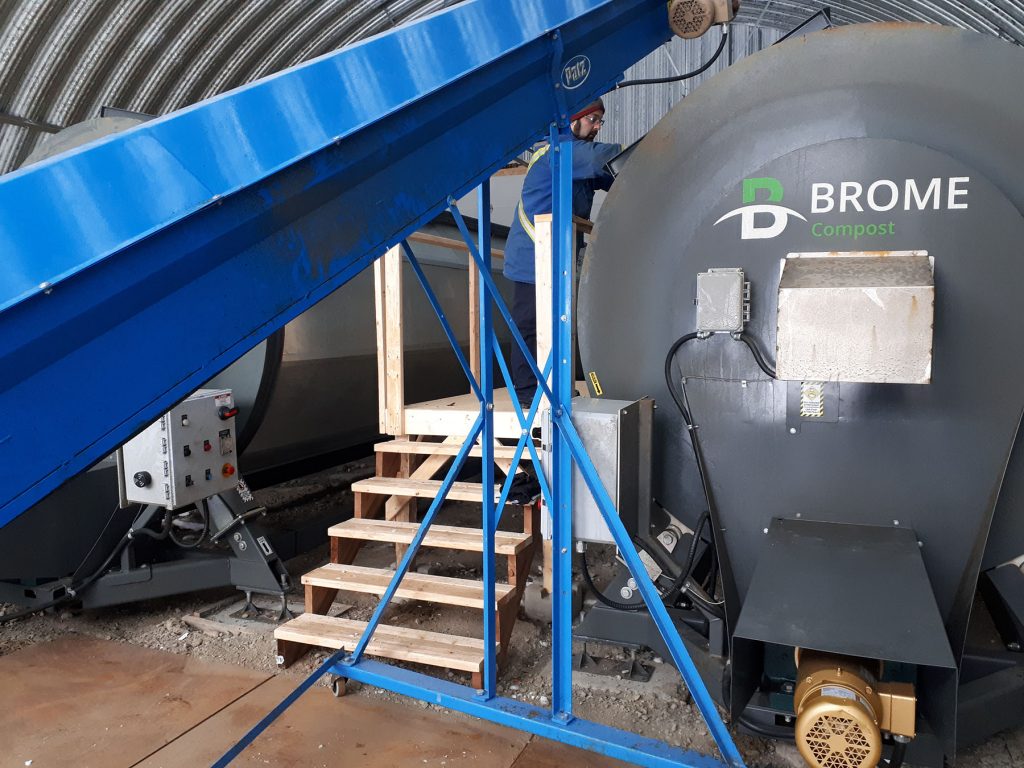
With the Quebec provincial government aiming to implement an organics ban for landfill sites, the municipality of Landrienne was searching for a long-term solution to manage organic waste and generate added value for their region. The site is shared as a collaboration between the municipalities of Saint-Marc-de-Figuery, of La Corne, and of Saint-Félix-de-Dalquier. The total population for these 4 municipalities, located in Abitibi-Témiscamingue, is 3800 people divided among 1600 homes. In Fall of 2021, the municipality of Barraute, a community of around 2000 people was integrated into the collection program.
See the many benefits that an industrial in-vessel composting system can have for municipalities
Project features
In order to improve operational efficiency and reduce transportation and site management costs, a Brome Compost thermophilic rotary drum composting system was installed in January 2020 in order to process source separated organics (SSO ’s) from their door-to-door collection program. The choice of this type of system offers a smaller site footprint in comparison with a windrow operations. The system is installed in a hangar, thereby protecting it from extreme weather and wild animals.
The specific characteristics of this northern location, with its close proximity to wetlands, were also important considerations that led to selecting a closed in-vessel BROME composting system. Composting in piles or windrows is a less desirable option in such areas because leachate (a residual liquid containing dissolved or suspended substances that occurs after water passes through matter) must be managed in order to prevent water and other potential environmental contamination. Using a closed in-vessel system to compost their organic waste means the time needed to achieve both finished compost and volume reduction is shortened significantly, i.e. a few weeks rather than months. As a result, composting and curing is accelerated and is done in storage bags rather than windrows or piles.
Choice of composting equipment and project objectives
The industrial composting system constructed for Landrienne consists of two BROME 632 rotating composters measuring 6ft wide by 32ft long, a mixer for pre-treatment, a conveyor, fume hoods, and breathable bulk bags at the exit of each composter. As such, more than 300 tonnes of organics produced annually will be diverted from landfill. By composting, the volume and weight of the organics collected will be reduced by 50%, resulting in around 160,000 kg of finished compost a year, kept in bulk storage bags until it is ready to be used by municipal public works departments and their happy citizens.
Here is a video showing Landrienne’s composting site in which the Director General, Mario Tardif, explains the choice of equipment and the site’s daily operations:
Other interesting information about this project :
http://chamard-env.com/portfolio/closed-thermophilic-composting-in-abitibi-a-first-in-north-america/
In French only : https://ici.radio-canada.ca/nouvelle/1511386/compost-thermophile-ferme-collecte-corne-harricana-dalquier
 Brome Compost
Brome Compost